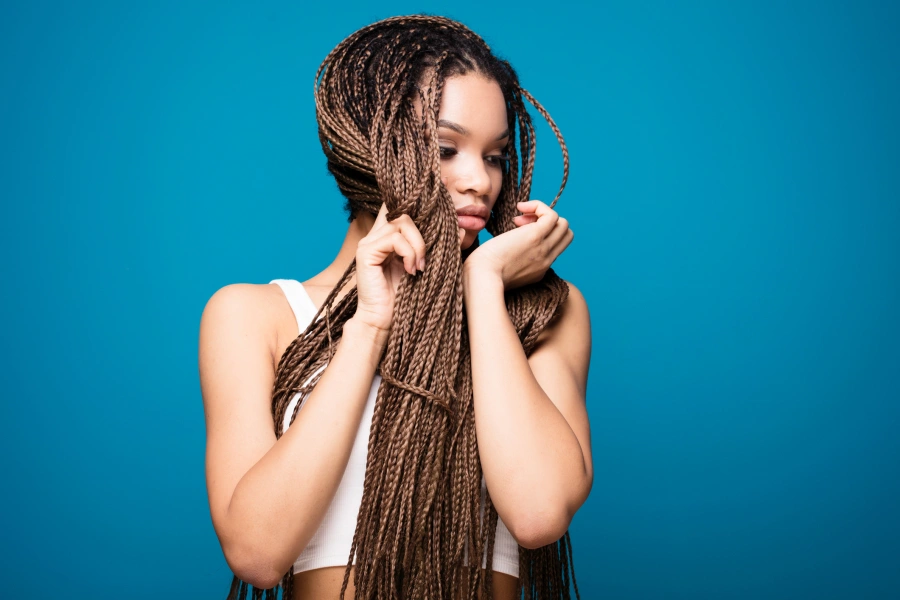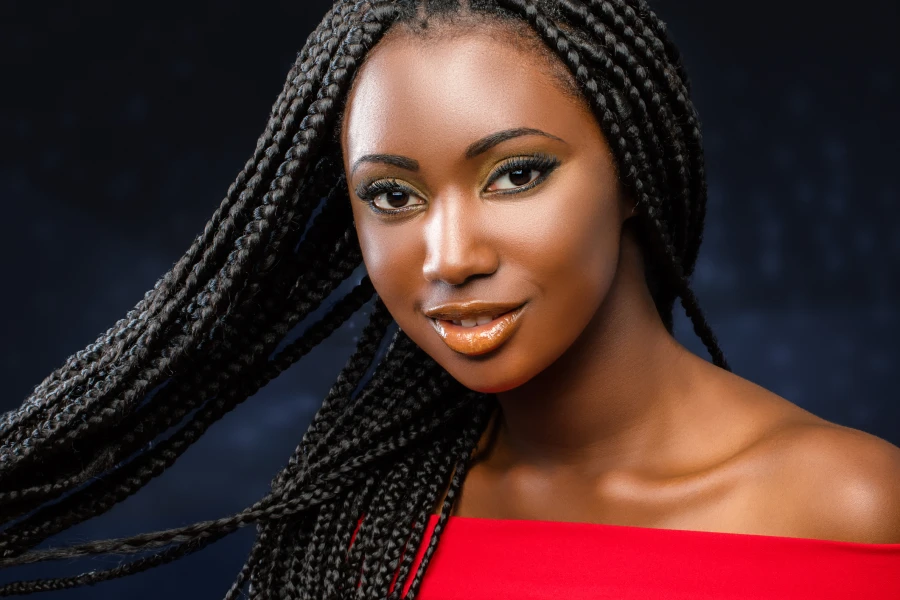Understanding the Differences and Choosing the Right Style
When it comes to braiding hair, you have a variety of options. Two popular styles are Knotless Braids and traditional braids. Both styles offer unique benefits and can suit different preferences and needs. In this guide, you’ll learn about the key differences between these two styles, including how they impact scalp health, the time needed for styling, and overall appearance. Understanding these aspects will help you make an informed decision about which style best fits your lifestyle.

The Appeal of Knotless Braids
Knotless braids are gaining popularity because they offer a more comfortable experience for many people. Unlike traditional braids, which start with a knot at the scalp, Knotless Braids begin with your natural hair and gradually incorporate extensions. This technique reduces tension on your scalp, minimizing discomfort and reducing the risk of breakage. Many prefer Knotless Braids because of their natural look and feel, making them ideal for anyone seeking a low-tension hairstyle.
Why People Choose Traditional Braids
Traditional braids have been around for centuries and are known for their durability. They often involve a tighter grip at the roots, which helps maintain the braid’s structure for a longer period. Some find that traditional braids provide a more secure hold, which can be beneficial for those with active lifestyles or thick hair. Although they may cause some initial discomfort, traditional braids remain a favorite for their lasting power and classic appearance.

Key Benefits of Each Style
Both Knotless Braids and traditional braids offer distinct advantages. It’s important to understand these benefits when choosing your preferred style. Here are some key benefits of each:
- Knotless Braids: Less tension on the scalp, reduced risk of damage, and a lightweight feel.
- Traditional Braids: Long-lasting hold, suitable for various hair types, and offers a timeless look.
Challenges You Might Face
Braiding styles come with their own set of challenges. For those opting for Knotless Braids, the main challenge is the time required for installation, as the process can be lengthy due to its gradual approach. On the other hand, traditional braids might cause initial scalp irritation due to their tightness. Additionally, maintaining both styles requires regular care to prevent frizz and ensure longevity.
Tackling Common Problems
Addressing common issues related to braiding styles can improve your overall experience. To reduce potential problems, consider these tips:
- Moisturize your scalp regularly to prevent dryness and flakiness.
- Use satin or silk scarves when sleeping to reduce friction and preserve the style.
- Avoid excessively tight braiding techniques to minimize scalp stress.
Best Practices for Maintenance
Caring for your braids ensures they last longer and maintain their appearance. Follow these best practices for optimal results:
- Wash your scalp gently without disrupting the braid pattern.
- Avoid heavy oils that can weigh down your hair or cause build-up.
- Satisfy moisture needs by using light leave-in conditioners or sprays specifically designed for braided hair.
Cost Factors to Consider
The cost of braiding varies depending on several factors. Knotless Braids typically require more time and skill, potentially resulting in higher costs compared to traditional braids. It’s essential to factor in maintenance expenses such as moisturizing products, protective coverings, and salon visits for adjustments when calculating total expenditure.
Your Next Steps With Hair Styling Choices
If you’re looking to explore new hairstyles in Silver Spring, MD, I recommend reaching out to experts who specialize in both Knotless Braids and traditional braids. At Vicky's Hair Braiding, experienced stylists can assist you in finding the perfect style that aligns with your preferences and lifestyle. Contact me today at (240) 743-1947 for professional guidance and book an appointment tailored to your unique hair care needs.